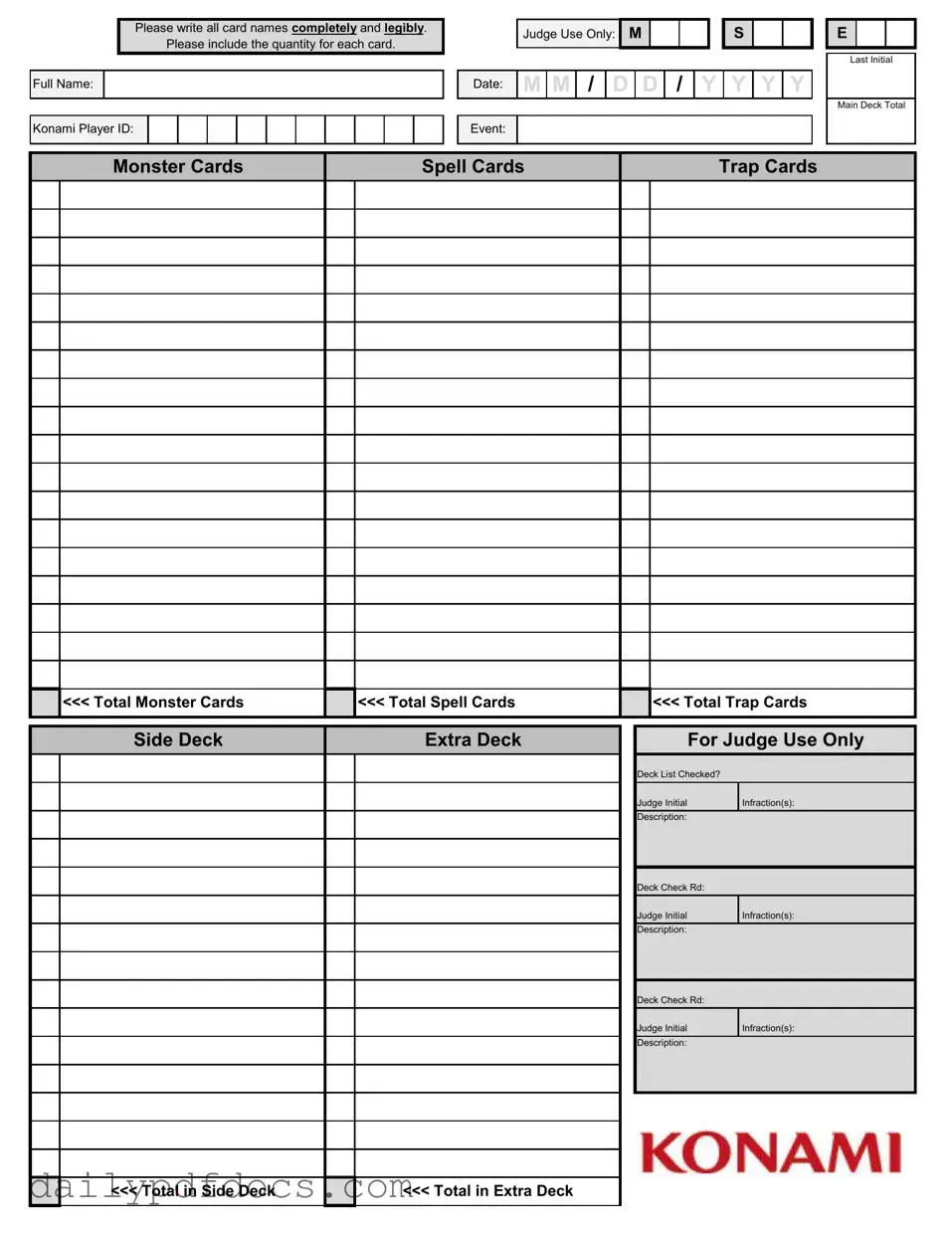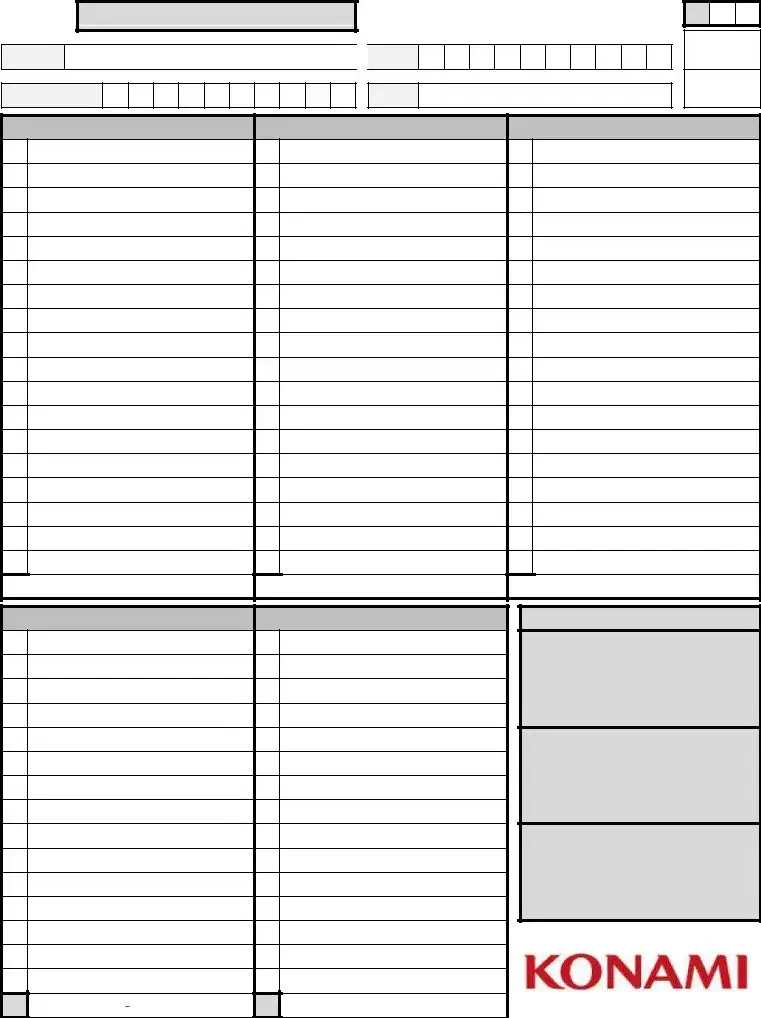What is the purpose of the Konami Decklist form?
The Konami Decklist form is designed to ensure that players accurately document their card selections for competitive events. By providing a clear record of the cards in their main deck, side deck, and extra deck, players can help judges verify compliance with tournament rules. This form is essential for maintaining fairness and transparency during events.
How should I fill out the card names on the form?
It is crucial to write all card names completely and legibly. This means using the full name of each card without abbreviations or shorthand. Clear handwriting will prevent misunderstandings and ensure that judges can easily read and verify your deck list. Additionally, including the quantity for each card is necessary to provide a complete overview of your deck composition.
What information do I need to provide in the personal details section?
In the personal details section, players must provide their full name and Konami Player ID. This information helps tournament organizers identify participants and track their performance. The date of the event should also be included, as it is important for record-keeping purposes. Be sure to double-check that all details are accurate before submitting the form.
What is the significance of the Judge Use Only section?
The Judge Use Only section is reserved for tournament judges to note any infractions or checks related to the deck list. Judges will mark whether the deck list has been checked and may indicate any issues that arise during the verification process. This section is important for maintaining the integrity of the tournament and ensuring that all players adhere to the rules.
What should I do if I have a discrepancy in my deck list?
If you notice a discrepancy in your deck list after submission, it is essential to address it immediately with a tournament judge. Depending on the nature of the discrepancy, judges may allow corrections or provide guidance on how to proceed. Being proactive in resolving any issues can help avoid penalties and ensure compliance with tournament regulations.
How do I calculate the totals for my deck?
To calculate the totals for your deck, simply count the number of cards in each category: monster cards, spell cards, and trap cards. Each total should be clearly indicated in the designated sections of the form. Additionally, do not forget to include the totals for your side deck and extra deck. Accurate totals are vital for judges to verify that your deck adheres to the tournament's card limits.




 <<< Total Monster Cards
<<< Total Monster Cards <<< Total Spell Cards
<<< Total Spell Cards <<< Total Trap Cards
<<< Total Trap Cards